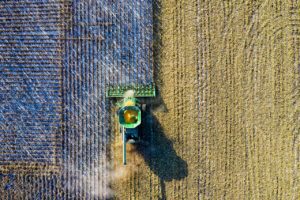We understand as a farmer, your machinery is vital to daily operations. So, let’s go over some key points about ‘Loss of Use’ coverage, ensuring you’re well-informed and prepared for any unexpected machinery issues.
What is ‘Loss of Use’ Coverage?
Q: What exactly does ‘loss of use’ coverage entail?
A: ‘Loss of Use’ coverage is essentially a safety net for when your machinery is out of commission due to an event covered by your policy. It’s designed to help compensate for lost income by covering costs like renting replacement equip
ment, ensuring your farming operations can continue without significant interruption.
What Does ‘Loss of Use’ Cover?
Q: Which situations are typically covered under ‘loss of use’ insurance for farm machinery?

A: This coverage typically applies when your equipment is damaged by specific events such as fire, theft, vandalism, or certain natural disasters. It helps by covering the cost of renting or leasing equipment or hiring someone to perform those tasks.
Q: Are there any limits or restrictions on what this coverage pays for?
A: Yes, there are usually limits on the duration and total amount the policy will cover. For example, it might cover up to a certain number of days or a maximum dollar amount per day. In the event of a total loss of the machinery, most insurers cover loss of use until an offer is made for payment. At Block’s Agencies, we offer a solution with ‘Extended Rental Expense’ through our partner, First Acre Insurance. ‘Extended Rental Expense’ provides an increased period of time for machinery rental expenses when the delay to replace lost machinery is outside of your control. It’s crucial to review your policy thoroughly to understand these specifics. Different insurers may offer different types of coverage in this scenario.
What Does ‘Loss of Use’ Not Cover?
Q: Are there any common exclusions to watch out for in ‘loss of use’ coverage?
A: Absolutely, there are common exclusions. Typically, this coverage won’t extend to issues like machinery breakdowns due to normal wear and tear, lack of maintenance, or mechanical failures unless your policy explicitly states so.
Q: Does this coverage apply to all types of farm machinery?
A: Not always. Coverage can vary depending on the type and age of your machinery and the specifics of your policy. Some policies might exclude older models or specialized equipment, so it’s important to check what your policy specifically covers.
How to Ensure Adequate Coverage
Q: How can farmers ensure they have adequate ‘loss of use’ coverage for their machinery?
A: To ensure adequate coverage, you should regularly review your insurance policies and assess the value and types of your machinery. It’s also a good idea to consult us to make sure your coverage aligns with your needs. Remember to update your policy as you acquire new equipment or as your farm’s conditions change.
In conclusion, while ‘Loss of Use’ coverage can be extremely beneficial in minimizing disruption, understanding the details of what is covered is essential. Proper management of this insurance can help protect your finances and keep your farming operations running smoothly, even when unexpected challenges arise. If you have any more questions or need further assistance, feel free to reach out!